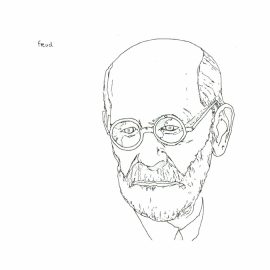

This article is an excerpt from the Shortform book guide to "Alchemy" by Rory Sutherland. Shortform has the world's best summaries and analyses of books you should be reading.
Like this article? Sign up for a free trial here.
Would you like to influence people more effectively? Have you found that reason and facts don’t always do the job?
According to Rory Sutherland, we should harness unconscious logic if we want to persuade people and influence their behavior. His insights and advice are valuable for business leaders, marketers, policymakers, parents, and anyone who seeks to influence others.
Keep reading to understand the power of unconscious logic and learn how to persuade others by tapping into it.
How to Persuade Others
Those who know how to persuade others effectively, especially when making policy and business decisions, realize that pure rationalism isn’t the answer. Humans, after all, are illogical beings, so any solution to human-centered problems must factor unconscious logic into the equation.
When we rely on classical logic, we use well-defined data points to reach conclusions and achieve clear-cut objectives. Sutherland points out that the world our brains evolved in is more uncertain than that process allows for. Rationalists like to reduce problems to simple approximations that logic can deal with. But, in practice, our minds make judgments based on trade-offs, nuance, and a hazy, big-picture understanding of the world.
The irrational ideas and behaviors that our minds come up with aren’t meant to be perfect or even correct; the purpose of the unconscious mind is not to determine the truth of the world, but to promote our survival as a species. It often does so using unfair bias, faulty heuristics, and magical thinking. Sutherland argues that, instead of treating these reactions as defects in the human psyche, our unconscious logic is a lever that we can use to persuade people and influence behavior that’s more powerful than reason alone. Ignoring the unconscious blinds us to potential pitfalls as well as unexpected, “irrational” solutions.
| The Logic of the Past To clarify Sutherland’s point about “unconscious logic,” the human mind and body developed to survive harsher conditions than those of today, so behavior that was rational for our ancestors no longer applies to the modern world. For instance, our love of sugary foods comes from an era when food was scarce and high-calorie foods gave a survival advantage. However, in a world of easy-to-access refined sugars, those same instincts lead to overeating and a host of related health problems. Our instinct to binge on sugary snacks is no longer a “rational” impulse from a survival standpoint. According to Rolf Dobelli in The Art of Thinking Clearly, many modern-day mental fallacies stem from our nature as social creatures who band into groups for survival. Because of this, we unconsciously assume that behaviors are rational if many people take part, that people in authority over your group tend to be right, and that your “in-group’s” positive traits outweigh its negative aspects, with the opposite being true of outsiders. These irrational biases helped our ancestors’ fledgling cultures survive, but we’ve carried them into the modern age while still considering ourselves more advanced than our forebears. |
Putting Unconscious Logic Into Practice
Understanding Sutherland’s concepts is different from putting them into practice. The pressure of traditional economics is strong, and, to find creative solutions outside it, you have to be willing to experiment with approaches that may seem silly. We’ll show how some of Sutherland’s ideas might be applied in two fictional scenarios—one in which a business owner is trying to move unsold merchandise, and another in which a local politician is trying to revitalize his town. Their solutions include questioning assumptions, changing perceptions, addressing people’s unconscious motivations, and bringing different ideas together in absurd combinations.
Scenario 1: Blind Date With a Beer
In our first example, Kate is the owner of a local pub. As a beer aficionado, she’s built up a stock of specialty imports from around the world, but unfortunately they haven’t proved as popular as she’d like, and most of her specialty beers sit unsold while her customers buy the more familiar brands over and over. Kate’s empirical data says that her customers aren’t interested in imported beers, despite various displays in her pub that logically explain the merits of each brew. Should Kate do the economically prudent thing, dump her unsold stock, and write it off as a loss? Or, as Sutherland might have her try first, can she perform a magic trick to make her customers change their drinking habits?
Kate starts by following Sutherland’s advice and questioning the assumptions her business is based on. Why do people order beer in her pub? Is it because they enjoy specific brands and her bar is the best place to get them? Of course not. If all they wanted to do was drink, it would be cheaper to buy what they want from the local liquor store and drink it at home. Kate realized that her customers’ real motivation for coming to her pub was to socialize and have fun, and that for the most part, which beer they ordered was tangential to that goal. Therefore, to make her imported beers sell, she had to tie them to her customers’ sense of fun and socialization.
Kate announced a new event: “Blind Date With a Beer.” She’d assemble random six-packs of bottles, mask the labels so each one was a mystery, and sell them only to groups of three or more. To make it feel special, she limited the event to only one night a week—signaling scarcity to increase its value. It would be irrational for customers to spend money without knowing what they’d get, but disguising the bottles tapped into the playful fun associated with low-stakes risk and surprise, like a game. By restricting the sales to groups, Kate tapped into the underlying socialization motive that brought people to her pub. After a while, the new event caught on, and Kate’s stock of imported beers found a new clientele.
| Blind Shopping in Practice While blind beer tastings have existed for a while, especially as social events to host at home, the example given here is actually based on the popular “Blind Date With a Book” program hosted by many public libraries during February in association with Valentine’s Day. Librarians will gift-wrap books with nothing to mark them but genre labels such as “mystery” or “romance.” This program has proven effective as a way to get readers to try out new authors and to find audiences for overlooked titles. Since library books check out for free, the program is low-risk and high-reward for patrons, and librarians engage the community by asking their regulars which titles they ought to send on “blind dates” with other readers. Once money becomes involved, shopping sight-unseen becomes more risky and irrational, yet risk may be part of the appeal. A lost luggage store in Scottsboro, Alabama, lets shoppers purchase “mystery bags” of products that are only vaguely labeled. Shoppers are also drawn to “bin stores” that resell returned items at discounted rates. While the items aren’t masked like the beers in our example, customers flock to these stores without knowing what they’ll find. While a purely rational shopper might look online for the exact products they want, the draw of mystery boxes and bin stores is the psychological thrill of discovery, rooted in the brain’s hardwiring to hunt for and bring home a prize. |
Scenario 2: Save Our Town, Save Our Team
In our second example, Marcus is a newly elected small-town councilman who promised to revitalize the town’s historic but crumbling business district. Many of the buildings on Main Street are abandoned, and the town can’t afford to buy and restore the unused properties. Several long-time businesses remain, including a furniture store and a restaurant, but stiff competition from a new shopping center on the edge of the city is wearing them down. After a string of new tax incentives fails to attract businesses back to Main Street, Marcus is at his wits’ end. Simple economics says that Main Street is doomed—but according to Sutherland, a little psychological alchemy might turn economic lead into gold.
Marcus finds two psychological keys to work with—the town’s pride in its high school football team and the Main Street restaurant that’s still in business. The two are unrelated except that both are closely tied to the town’s sense of identity, especially for those who’ve lived there their whole lives. Marcus plans to build an emotional link between the survival of Main Street and the football team’s success, no matter how irrational or absurd that concept is. He paints a bleak picture of the kind that Sutherland says we’re primed to believe, but if he can get the town’s residents to associate shopping on Main Street with supporting the football team, it might breathe economic life into the district.
He starts by inviting the football team to the restaurant for a pre-game dinner at the start of the football season, which he then makes into a regular event that more and more people attend to show support. At these dinners, Marcus talks about his memories of Main Street and wonders aloud how the town—and by extension the football team—will survive if the historic district dwindles. Since the town no longer depends on its historic district financially, there’s no logical reason why one should affect the other, but Sutherland would point out that that doesn’t matter. Several residents take the message to heart and form a committee to reinvest in Main Street. By tugging at heartstrings, Marcus turns the tide against cold economics.
| “Identity First” Economics and Behavior Despite what Sutherland describes as policymakers’ and business leaders’ overreliance on traditional economics, people in politics and marketing have long known that emotions around personal and group identity are a powerful tool to shape behavior, as discussed by motivation expert Tony Robbins in Awake the Giant Within. Though identity-based politics is often derided for the way it negates rational discourse, identity as a group motivator has had its success stories too. One example is the “Don’t Mess With Texas” anti-littering campaign. Instead of reasoning that littering is bad, the simple slogan implies that littering is an attack against Texas, and that Texans—who pride themselves on strength and resilience—are uniquely qualified to fight back. Brushing aside the logical assumption that most people who litter in Texas are Texans, the campaign leverages Texans’ self-identification as people prepared to defend themselves to create a measurable reduction in littering—over 60% between 2013 and 2023 alone. It’s the kind of psychological solution that Sutherland says can be far more cost-effective than an engineered solution, such as building more landfills and picking up more trash. Though many small towns struggle with slow decay, the fictional example used here was inspired by the story of Denham Springs, Louisiana, whose historic business district was crumbling in the 1970s but had been thoroughly revitalized by the ’90s as a shopping bazaar for antiques. Unlike in our fictional example, the shift in Denham Springs’s historic district’s identity was unconscious, not deliberate at first. However, to illustrate Sutherland’s argument, anything that the unconscious can accomplish, a conscious-minded leader can take advantage of, if willing to look beyond the confines of traditional economics and logic. |

———End of Preview———
Like what you just read? Read the rest of the world's best book summary and analysis of Rory Sutherland's "Alchemy" at Shortform.
Here's what you'll find in our full Alchemy summary:
- Why conventional logic and reason fail as predictors of human behavior
- Why irrational thinking is a secret weapon for persuasion
- Examples of how to apply Sutherland’s methods in real life






